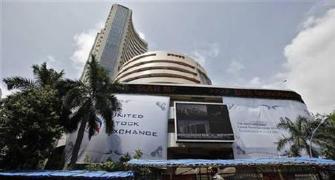Banks will introduce hybrid home loans with stiff penalty on prepayment and shifting.
 The marginal cost-based lending rate or MCLR that has kicked in from April 1 replaces the base rate system that was introduced with much fanfare six years ago.
The marginal cost-based lending rate or MCLR that has kicked in from April 1 replaces the base rate system that was introduced with much fanfare six years ago.
In theory, MCLR is fairly straightforward. The bank declares its MCLR every month, the benchmark rate, based on the latest interest rate it pays on deposits in that month, with a couple of additional items.
Borrowers are charged a little above this rate as the bank will charge a 'spread'.
This will be pre-fixed at the time of giving the loan and cannot be changed easily.
In theory, once the bank reduces its deposit rates, the MCLR will come down and since the 'spread' is pre-fixed, so will the interest rate for borrowers.
But, there are issues. For one, unlike the base rate, there will be a multitude of rates such as overnight, monthly, quarterly, six-monthly and yearly.
Banks are free to have more such rates. Each of these rates will be announced every month by each bank.
Then, apart from the deposit rate, there are a whole host of subjective factors applicable in each calculation and there can well be a situation where these multiple rates move in opposite directions.
That is, the monthly rate might be down but the annual rate goes up.
Also, the applicability of the reset date has been left to the discretion of the banks.
So, State Bank of India (SBI) and ICICI Bank have chosen to go for a yearly reset of interest rates for home loans, whereas Kotak Mahindra Bank has chosen a six-month reset and some other banks have chosen quarterly resets.
The implications of this difference in reset periods will only be known in the future.
In the current context, it implies that even if SBI drops MCLR in May, the home loan borrower will get the benefit only after one year.
In addition, the MCLR system does not apply to housing finance companies such as Housing Development Finance Corporation and LIC Housing and other finance companies as well as non-banking finance companies.
And, if you want to shift to the new mechanism, you may have to pay a fee.
The good thing: Both floating and fixed rates are clearly defined - an excellent move.
Based on these, let's make some predictions:
Three to seven year loans like car loans and personal loans, currently given on a floating rate basis by public sector banks (most private banks are already providing these on a fixed-rate basis), will shift to a fixed rate regime.
This will help banks charge a prepayment penalty. It is also possible that banks may stop offering the floating rate option for such loans or make it more expensive.
Even in the home loans segment, we shall see many hybrid loans where the initial period will be a fixed rate for at least three years, to enable the banks to charge a stiff prepayment penalty in the event that the consumer wants to prepay or shift his loan during this period.
However, these types of loans have never been popular with the borrowers.
Quite a few banks are going to keep the reset clause at 12 months from the date of disbursement.
That will enable them to deny the benefit of the lower rate to the borrowers for at least a year.
This is a double-edged weapon as in the future, this will also prevent banks from increasing the rates for a year despite an intermediate increase in interest rates.
Maybe, at that time, they will change the reset period for new consumers.
Of course, nothing but inertia prevents the consumer from shifting his loan without a prepayment penalty, even within the year.
The writer is a Securities and Exchange Board of India-registered investment advisor.










